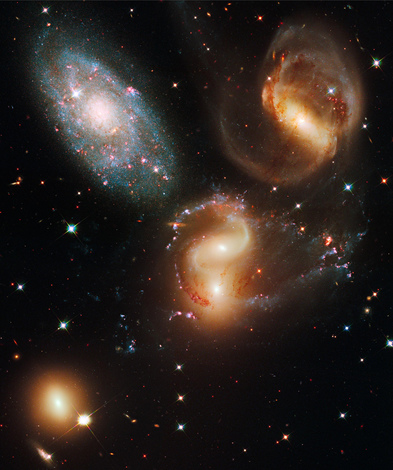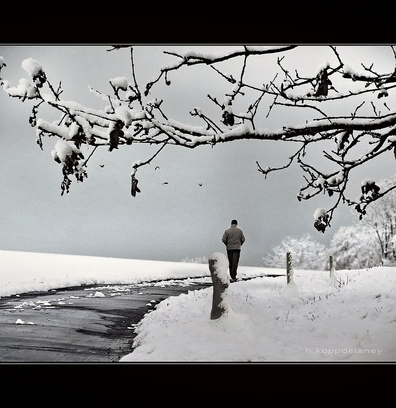Between Stockholm Syndrome and Lima Syndrome
Part 38: The Misplaced Sense of Self Importance and Privilege

The true value of a human being is determined primarily by the measure and sense in which he has attained liberation from the self.
-ALBERT EINSTEIN
Throughout the ages, the question of "Who am I?" has puzzled the wise, sages, scholars, philosophers, psycholinguists, even astronomers. In fact, if you think you know who you are, then the following TED clip by Amy Adkins is "I-opening" (pun intended) and may change your mind. Indeed when someone says "I" does that person refer to the "I" of twenty years ago, last year, last month, or last week? And will it be the same with the "I" of next month?
From a biological perspective, as outlined in Part 22 (There is Something Immoral in Immortality), Dr. Paul C. Aebersold of the Oak Ridge Atomic Research Center concluded that about 98 percent of the 10 octillion (a one with 28 zeroes) atoms in the average human body are replaced annually. The crystals of bones are continually dissolving and reforming. The stomach's lining replaces itself every five days. Skin wear and tear is completely retreaded in about a month. A new liver is formed every six weeks. Chemistry professor Donald Hatch Andrews of John Hopkins University even estimated that one's physical body is completely renewed down to the very last atom within about five years. In The Accidental Universe (2013) MIT physicist Alan Lightman states that "by the time an unsuspecting person reaches the age of forty, the entire lining of her large intestine has been replaced several thousand times. Billions of cells have been shuffled each go-round." As they say, the only permanent thing in life is impermanence.
Naturally the death and renewal of cells is a prerequisite to life. Cells that refuse to die are hazardous to one's health. The dreadful disease of cancer, as stated in Part 22, is caused by abnormal cell growth that potentially invades or spreads to other parts or organs. Scientists have recently understood the fundamental difference between normal and cancerous cells. In Why Aren't Black Holes Black? (1997), Robert Hazen and Maxine Singer state that the cruel irony of cancer is that it results from the failure of cells to die. A normal cell is supposed to age and die naturally. On the other hand, a cancerous cell is immortal because its regulating clock is either turned off, constantly reset, or just ignored.
From a spiritual perspective, it's perhaps not surprising that in Buddhism, impermanence (anicca) is perceived to be in the very same package of non-self (anatta) and suffering (dukha). The question "Who am I" is not so much of an issue, because in Buddhism even the notion of an "I" is questionable. This egoless wisdom is actually not a monopoly of Buddhism. Scottish philosopher David Hume (1711-1776) seemed to think along similar lines when he declared his Bundle Theory: "An object consists of its properties and nothing more: thus neither can there be an object without properties nor can one even conceive of such an object." In essence, since biologically one's body (intestine lining or liver) keeps changing, her spiritual self (sense of "I") keeps changing too. Body, mind, and spirit are one. And since it keep changing, using "I" as a permanent point of reference may be an exercise in futility.
Therefore, both from biological and spiritual perspectives, the egocentric, anthropocentric, privileged and exceptional importance of "I" is a futile, if not preposterous, proposition. From a cosmological perspective, our sense of place and importance in this universe is absurdly insignificant. As illustrated by Guy Murchie in The Seven Mysteries of Life (1999), Planet Earth is orbiting the sun at 18.5 miles per second, while the sun and virtually all visible stars are swinging at 150 miles per second around the Milky Way galaxy, which with a diameter of 100,000 light years, is speeding from other galaxies at thousands of miles per second. Since the observable universe contains at least 100,000,000,000 (one hundred billion) galaxies according to astronomers' best estimates, even if the entire Milky Way disappears—let alone just the Solar system or the Earth or a puny "I"—no one would even notice. In fact, in about 4 billion years from now, "our" Milky Way and Andromeda galaxies will be involved in a galactic collision.
Indeed the universe would have existed without us. Easily. The primary research interest of Dr. Garth Illingworth, a professor of astronomy and astrophysics at the University of California Observatories/Lick Observatory, are galaxies that were formed within 400-600 million years after the Big Bang. This means he is scrutinizing galaxies which light have traveled through the universe at 299,792,458 meters per second for about 12 to 13 billion years. Considering that Earth is 4.6 billion years old and the first single-celled organisms appeared on it over 3 billion years ago, light from those distant galaxies had started the long journey 8 billion years before Earth's formation and more than 9 billion years before the first single-celled organisms appeared on it.
To repeat what had been stated by American paleontologist and evolutionary biologist Stephen Jay Gould (1941-2002) in Part 18 (Our Spatial and Temporal Insignificance in the Universe), we—thus a group of "I"s—are here "because one odd group of fishes had a peculiar fin anatomy that could transform into legs for terrestrial creatures; because the earth never froze entirely during an ice age; because a small and tenuous species, arising in Africa a quarter of million years ago, has managed, so far, to survive by hook and by crook." Obviously we are not privileged; much less exceptional. "In terms of position, velocity, and acceleration," the late Carl Sagan wrote in The Varieties of Scientific Experience (posthumous 2006), "there is nothing privileged about where we are."
Thus, where do our misplaced sense of self-importance, egocentrism and anthropocentrism come from? Do they derive from our sheer luck to inhabit this planet, from our improbable long journey from a bunch of fishes to robot-creating humans, from false beliefs, or from all of the above?
[To be continued.]
Johannes Tan, Indonesian Translator & Conference Interpreter
-ALBERT EINSTEIN
Throughout the ages, the question of "Who am I?" has puzzled the wise, sages, scholars, philosophers, psycholinguists, even astronomers. In fact, if you think you know who you are, then the following TED clip by Amy Adkins is "I-opening" (pun intended) and may change your mind. Indeed when someone says "I" does that person refer to the "I" of twenty years ago, last year, last month, or last week? And will it be the same with the "I" of next month?
From a biological perspective, as outlined in Part 22 (There is Something Immoral in Immortality), Dr. Paul C. Aebersold of the Oak Ridge Atomic Research Center concluded that about 98 percent of the 10 octillion (a one with 28 zeroes) atoms in the average human body are replaced annually. The crystals of bones are continually dissolving and reforming. The stomach's lining replaces itself every five days. Skin wear and tear is completely retreaded in about a month. A new liver is formed every six weeks. Chemistry professor Donald Hatch Andrews of John Hopkins University even estimated that one's physical body is completely renewed down to the very last atom within about five years. In The Accidental Universe (2013) MIT physicist Alan Lightman states that "by the time an unsuspecting person reaches the age of forty, the entire lining of her large intestine has been replaced several thousand times. Billions of cells have been shuffled each go-round." As they say, the only permanent thing in life is impermanence.
Naturally the death and renewal of cells is a prerequisite to life. Cells that refuse to die are hazardous to one's health. The dreadful disease of cancer, as stated in Part 22, is caused by abnormal cell growth that potentially invades or spreads to other parts or organs. Scientists have recently understood the fundamental difference between normal and cancerous cells. In Why Aren't Black Holes Black? (1997), Robert Hazen and Maxine Singer state that the cruel irony of cancer is that it results from the failure of cells to die. A normal cell is supposed to age and die naturally. On the other hand, a cancerous cell is immortal because its regulating clock is either turned off, constantly reset, or just ignored.
From a spiritual perspective, it's perhaps not surprising that in Buddhism, impermanence (anicca) is perceived to be in the very same package of non-self (anatta) and suffering (dukha). The question "Who am I" is not so much of an issue, because in Buddhism even the notion of an "I" is questionable. This egoless wisdom is actually not a monopoly of Buddhism. Scottish philosopher David Hume (1711-1776) seemed to think along similar lines when he declared his Bundle Theory: "An object consists of its properties and nothing more: thus neither can there be an object without properties nor can one even conceive of such an object." In essence, since biologically one's body (intestine lining or liver) keeps changing, her spiritual self (sense of "I") keeps changing too. Body, mind, and spirit are one. And since it keep changing, using "I" as a permanent point of reference may be an exercise in futility.
Therefore, both from biological and spiritual perspectives, the egocentric, anthropocentric, privileged and exceptional importance of "I" is a futile, if not preposterous, proposition. From a cosmological perspective, our sense of place and importance in this universe is absurdly insignificant. As illustrated by Guy Murchie in The Seven Mysteries of Life (1999), Planet Earth is orbiting the sun at 18.5 miles per second, while the sun and virtually all visible stars are swinging at 150 miles per second around the Milky Way galaxy, which with a diameter of 100,000 light years, is speeding from other galaxies at thousands of miles per second. Since the observable universe contains at least 100,000,000,000 (one hundred billion) galaxies according to astronomers' best estimates, even if the entire Milky Way disappears—let alone just the Solar system or the Earth or a puny "I"—no one would even notice. In fact, in about 4 billion years from now, "our" Milky Way and Andromeda galaxies will be involved in a galactic collision.
Indeed the universe would have existed without us. Easily. The primary research interest of Dr. Garth Illingworth, a professor of astronomy and astrophysics at the University of California Observatories/Lick Observatory, are galaxies that were formed within 400-600 million years after the Big Bang. This means he is scrutinizing galaxies which light have traveled through the universe at 299,792,458 meters per second for about 12 to 13 billion years. Considering that Earth is 4.6 billion years old and the first single-celled organisms appeared on it over 3 billion years ago, light from those distant galaxies had started the long journey 8 billion years before Earth's formation and more than 9 billion years before the first single-celled organisms appeared on it.
To repeat what had been stated by American paleontologist and evolutionary biologist Stephen Jay Gould (1941-2002) in Part 18 (Our Spatial and Temporal Insignificance in the Universe), we—thus a group of "I"s—are here "because one odd group of fishes had a peculiar fin anatomy that could transform into legs for terrestrial creatures; because the earth never froze entirely during an ice age; because a small and tenuous species, arising in Africa a quarter of million years ago, has managed, so far, to survive by hook and by crook." Obviously we are not privileged; much less exceptional. "In terms of position, velocity, and acceleration," the late Carl Sagan wrote in The Varieties of Scientific Experience (posthumous 2006), "there is nothing privileged about where we are."
Thus, where do our misplaced sense of self-importance, egocentrism and anthropocentrism come from? Do they derive from our sheer luck to inhabit this planet, from our improbable long journey from a bunch of fishes to robot-creating humans, from false beliefs, or from all of the above?
[To be continued.]
Johannes Tan, Indonesian Translator & Conference Interpreter




 RSS Feed
RSS Feed